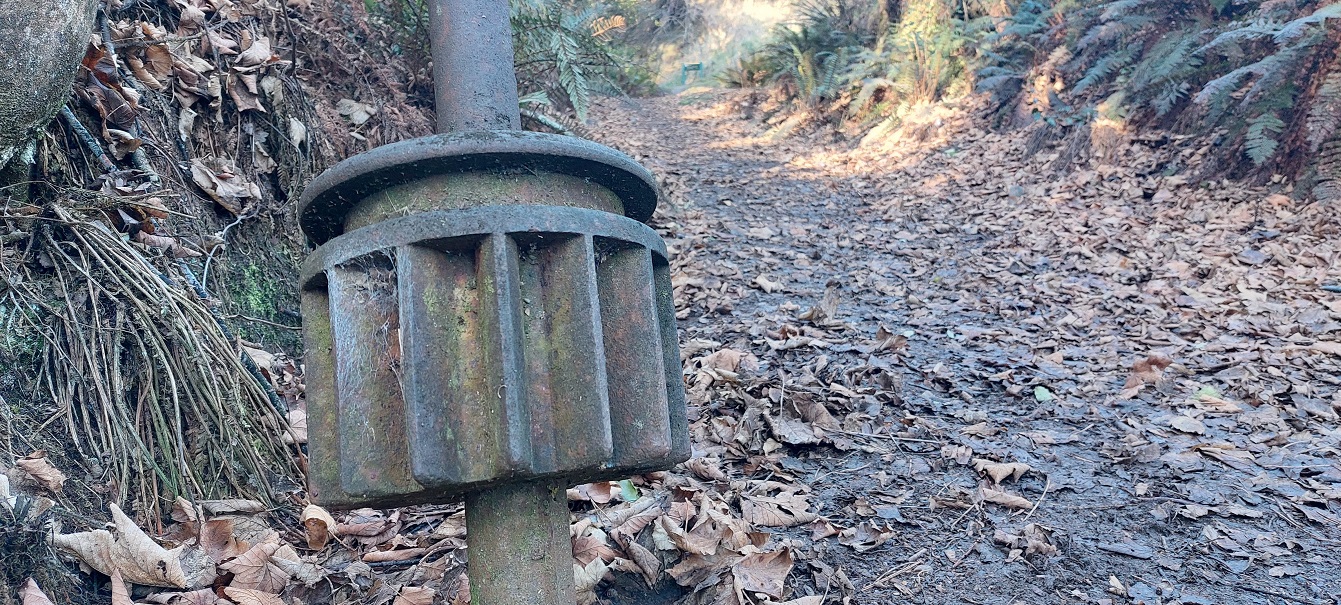
But in the 1860s it was the last 4km that gold miners travelled, many from way overseas, before finally arriving at Gabriel’s Gully.
It connects Lawrence town with the gully itself.

At Gabriel’s Gully there’s still a gold safe overlooking the reserve.
Its rusting, ongoing presence shows that our early Pākehā history is actually quite recent.
Although many drive the road to the gully, using the walking track adds to the build up.
The scenic route winds beside and above the road, with views back to Lawrence.
It can mean farm animals’ puggy prints but hey, small-fry stuff compared with our forbears’ forbearance.
Who would want to live here in a tent in winter?
Wouldn’t you know it, the first indication you’ve arrived is a Doc sign about a gold fossicking area.
It’s still a thing.
Gabriel’s Gully looks like a huge paddock.
More signs tell you to stick to the track because of unmarked shafts.
Edgy.
Not traumatising, not confronting.
But definitely pretty edgy.
Low hills u-shape the paddock and host a 2.5km loop walk.

An unpleasant funny spiralled thing morphs into the remains of a machine used for crushing rock.
A scary hole in a hill is now a storehouse for explosives.
A trackside prong no longer wants carted out but earns its place as taonga.
Young guys pose brightly for a photo at the water race they’re digging by hand.
The first person to find gold in the area is pictured sometime before his death at 63 years.
He looks like an old man with good reason to be well worn out.
Now some of his agemates attempt to re-tinder things with the artificial aids of chemical and cyber stimulation. Things have changed.
The reserve is a bit of a monument to capitalism, with the flora showing signs of our influence too.
The few native species are dominated by invasive pine, Spanish heath and Himalayan honeysuckle.
I can’t talk — my great great grandfather made a living driving a bullock cart between Dunedin and Gabriel’s Gully.
Maybe it doesn’t matter.
According to Alain de Botton, "99.9% of all organisms that have ever existed have been wiped out across the five mass extinctions of history".
"Five times over the last 500 million years, life has more or less had to begin again from scratch."
Hmmm, humans are an organism.
In one last celebration of how times change, I was given a hitch hike back to town and we were all old enough to find it unremarkable.











